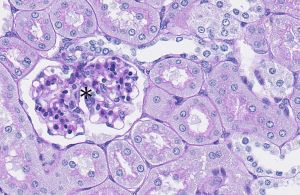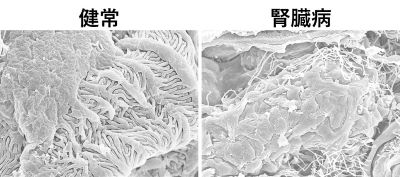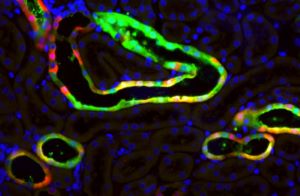- Home
- Social Action
- ★One Health Relay Report #12★
About "Silent Kidney"

Profile #12: Dr. ICHII Osamu, Professor
Laboratory of Anatomy,
Department of Basic Veterinary Sciences, Faculty of Veterinary Medicine
【Research Topics】
・Relation between urinary organs and immune systems in animals
・Renal diseases and their biomarkers in animals
~Silent Kidney~
“Kan-jin Kaname”. This Japanese word means something very important. “Kan and Jin” are derived from “liver and heart” or “liver and kidney”, respectively. As the history of the Japanese language, the kidneys have been regarded as important as the heart and liver.
While the cardiac abnormalities are evident due to the change of heart beats, diseases of the kidneys and liver are harder to detect, and both are referred as the “silent organs”. However, recent kidneys are screeching because approximately one in eight Japanese are suffering from chronic kidney disease (CKD). CKD has also been increasing in animals, especially in elderly cats. Therefore, it can be said that CKD is now a “common disease between animals and humans*1”. While the liver shows strong regenerative activity, the kidneys are difficult to be regenerated, and prevention and early diagnosis are crucial to manage the kidney disease.
Our research aims to develop diagnostic tools called “biomarkers” in order not to miss the small signs from the silent kidney. The kidneys are mainly divided into the “glomerulus” that filter blood and the “tubulointerstitium” that reabsorbs that filtrate. In kidney disease, either or both of them would be injured. Evaluating “which, how much, and how” of these injuries is important for the later therapeutic strategy.
What kind of substances would be a biomarker? We focus on “urine”, which is discarded every day. We conduct a comprehensive analysis of the proteins and nucleic acids contained in urine in order to find candidate markers that are useful for both animal and human kidney diseases. Now, we particularly interested in microRNA*2, a nucleic acid encapsulated in capsules called exosomes in urine, and are evaluating their usefulness and potential as a novel biomarker.
*1 I call it a “Zoobiquity-related disease”. For more information, refer our newsletter at onehealth.vetmed.hokudai.ac.jp/content/files/Publication/News_Letter_vol.1.pdf.
*2 Short RNAs having approximately 22 bases, whose sequences are highly conserved among animal species.

Figure 1: Light micrograph of a rabbit kidney. The asterisk is a glomerulus, surrounded by renal tubules.

Figure 2: Scanning electron micrograph of the cells that consist of mouse glomerulus (podocytes). The left and right panels show healthy and injured podocytes. Previous our studies have shown that injured podocytes released exosomes containing microRNAs with their morphological changes.

Figure 3: Imaging of tubular injury markers. The injured tubules are colored red. Here, a candidate biomarker protein called IL-36α is visualized by fluorescence microscopy.
